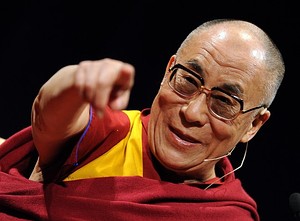Recently, one of my clients left her position as head of human resources because she could not reconcile her company’s stated commitment to the wellbeing of its employees with the reality that its highest priority was wealth creation. The employees were stretched to a breaking point; chronic exhaustion and burnout were ubiquitous. The CEO clearly recognized that the health of employees impacted the bottom line and, as a result, he deemed this a core value. He directed my client to lead a key initiative to support “employee well being.” But in so doing, she became the face of hypocrisy since employees knew that the quality of their lives would continue to be sacrificed for the sake of aggressive corporate growth. Ultimately, it is not possible to serve two masters. We can collaborate, cooperate, and reconcile, but eventually we will be asked to choose. I have been thinking about this in relationship to two essential ‘master’ principles: organizational mission and the bottom line.
In the 1990’s John Elkington coined the phrase “triple bottom line,” arguing that business success should be defined by measuring profit, environmental responsibility, and social responsibility. This attempt to create a more responsible business ethic has been both revered and critiqued. In order to be effective, this kind of framework must be a living one - fluid, contextually responsive, and adaptive. In the end, any company attempting to live by this model will find itself, in certain moments, having to choose.
By contrast, a social enterprise serves one master: its purpose is to respond to societal needs in a creative and entrepreneurial way. There is a purity of intent in this, and, as a result, a clarity that arises in the decision making process when we are confronted with those moments of choice. With this clarity, the mission of an organization is, without a doubt, the guiding principle, and this increases the possibility that the values of the organization can also prevail.
How did we get to the point where, in mainstream business, the financial bottom line was placed above the very mission of our businesses?
 My grandmother’s name was Flora, and she was all heart. Born and raised in Bristol, Tennessee, she had a deep connection to Appalachia. On occasion, I would ride with her into the Appalachian Mountains with a station wagon full of groceries to be delivered to several dirt-poor families that she watched out for. There wasn’t an arrogant bone in my grandmother’s body, a sense that she understood poverty from the inside out and took it in stride – both the fact of being poor and her service to those that needed help. As a result, there wasn’t shame in these exchanges, and I so loved accompanying her.
There were other times, however, when I was embarrassed by my grandmother’s service. She had a compulsion to give, and this meant that she wasn’t always able to discern when to step in and when to step back. On occasion, I stood as witness as my grandma insisted on paying for someone else’s groceries – a random person that she thought might be struggling. There were times when this gesture was a lovely act of generosity. Other times, standing next to her, I wanted to sink into the earth, my body full of dread - a dead giveaway that my grandmother had overstepped an invisible boundary.
My grandmother’s name was Flora, and she was all heart. Born and raised in Bristol, Tennessee, she had a deep connection to Appalachia. On occasion, I would ride with her into the Appalachian Mountains with a station wagon full of groceries to be delivered to several dirt-poor families that she watched out for. There wasn’t an arrogant bone in my grandmother’s body, a sense that she understood poverty from the inside out and took it in stride – both the fact of being poor and her service to those that needed help. As a result, there wasn’t shame in these exchanges, and I so loved accompanying her.
There were other times, however, when I was embarrassed by my grandmother’s service. She had a compulsion to give, and this meant that she wasn’t always able to discern when to step in and when to step back. On occasion, I stood as witness as my grandma insisted on paying for someone else’s groceries – a random person that she thought might be struggling. There were times when this gesture was a lovely act of generosity. Other times, standing next to her, I wanted to sink into the earth, my body full of dread - a dead giveaway that my grandmother had overstepped an invisible boundary.